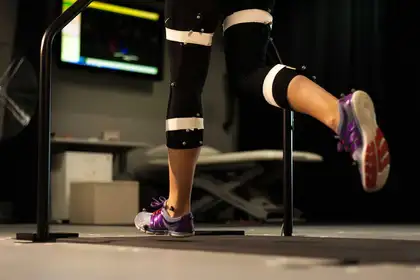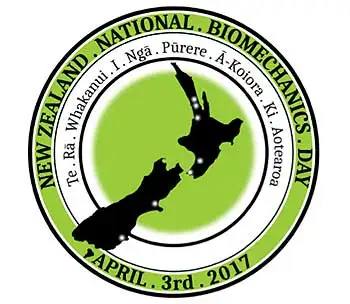
For the first time, New Zealand is taking part in National Biomechanics Day, led by Dr Sarah Shultz from the School of Sport and Exercise. Image credit: AUT.
What do a rugby scrum, hip replacement surgery and a game of Wii bowling all have in common? What about rising from a chair, jumping on a trampoline, or making a bed?
All of these activities relate to biomechanics. Yet, for all of its contributions to medicine, health, human and animal movement, and performance, biomechanics goes largely unacknowledged in day to day life.
For the first time, New Zealand is taking part in National Biomechanics Day, in the hope of changing this mind-set, and improving awareness. The movement began in the United States as a way to expose secondary school students to hands-on experiential learning activities centred around biomechanics research. The event has become so popular that National Biomechanics Day is being celebrated by thousands of students and teachers around the world, including Canada, Brazil, the United Kingdom and now New Zealand.

The National Biomechanics Day logo, designed by Kalima Farris from Yoobee School of Design.
The project is being led by Dr Sarah Shultz of Massey University’s School of Sport and Exercise, and is a collaboration between Auckland University of Technology, University of Auckland, University of Canterbury, University of Otago and University of Waikato. It is part of the government’s A Nation of Curious Minds – He Whenua Hihiri/Te Mahara project, funded by the Ministry of Business, Innovation and Employment Unlocking Curious Minds Contestable Fund.
So what is biomechanics? “Simply put, it is the study of forces and their effects on living systems. Because every action involves a relationship between forces and motion, biomechanics can be applied to everything we do. It is versatile, it is fascinating, and the biomechanics researchers of New Zealand want to share their passion for this unknown science with secondary school students across the country,” Dr Shultz says.
More than 1000 students are registered to participate either on site or via video link on April 3, at eight sites across New Zealand.

Motion capture is used to understand how horses move at Massey’s Institute of Veterinary, Animal and Biomedical Sciences.
Dr Shultz hopes that by experiencing a university laboratory environment, pupils will be engaged to think critically and solve problems associated with biomechanics in everyday life. “These students will get the chance to experiment with state of the art equipment, while hundreds more will participate via online streaming, with a combination of video demonstrations and hands-on activities specifically tailored to the classroom environment. All of the activities are focused on helping students better understand how we study biomechanics in making humans and animals healthier, stronger, faster, and more creative!”
Some workshops, like those being held at AUT, will focus on the role of biomechanics in optimising sports performance.
Kelly Sheerin, lecturer in sports biomechanics at AUT’s School of Sport and Recreation and manager of AUT’s Sports Performance Clinics, says, “Sports Biomechanics is an exciting career option, and one that’s growing rapidly with the emergence of new technology. Students will have the opportunity to experience how they can apply the maths, science and technology knowledge they’re learning in school to enhancing our nation’s athletes.”
Click here for the New Zealand National Biomechanics Day Facebook page for more information.